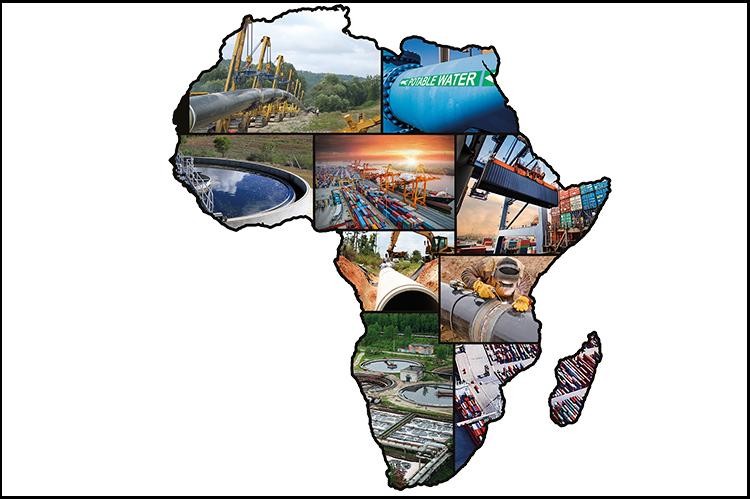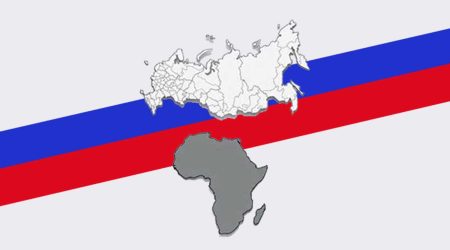
5
May
Beyond Extraction: Unlocking Africa’s Industrial Potential through Value Addition
For far too long, the narrative of African economies has been shaped by the extraction and export of raw materials. From colonial times to the present day, this pattern has persisted, defining the continent’s role in the global economic order. While Africa’s wealth of natural resources might seem an asset, its continued reliance on exporting unprocessed goods has proven to be a significant obstacle to economic transformation and political empowerment. A decisive shift toward value addition and the export of finished products is not only desirable – it is essential for Africa’s sustainable development and rightful place in the global economy.
Economically, the dominance of raw material exports exposes African nations to the inherent volatility of global commodity markets. Unprocessed goods command only a fraction of the value of finished products and are highly susceptible to external shocks, leading to unstable revenue streams and hampering long-term development planning. In contrast, exporting value-added products generates significantly higher returns, stabilizes income, and buffers economies against global price swings.
Processing resources domestically not only boosts earnings but also creates employment – especially in the higher-paying industrial sector – and reduces reliance on costly imports of manufactured goods. This approach lays the groundwork for stronger economic self-reliance and more resilient national economies.
Africa’s persistent trade imbalance underscores this economic misalignment. In 2022, raw materials constituted nearly half of Sub-Saharan Africa’s total exports, while its imports were dominated by finished consumer and capital goods. This pattern – exporting raw wealth and reimporting it as expensive finished products – represents a systemic drain on African economies.
Consider Ghana, the world’s second-largest cocoa producer. Despite cocoa accounting for around 20% of Ghana’s export earnings and supporting over 800,000 smallholder farmers, the country exports the vast majority of its cocoa in raw or semi-processed form. By limiting domestic processing, Ghana forfeits the higher margins and job creation associated with chocolate manufacturing – leaving most of the value to be captured by European and North American confectioners.
A similar dynamic plays out in the Democratic Republic of Congo (DRC), which in 2023 accounted for approximately 74% of global cobalt mine output. That year, the DRC earned roughly $2.4 billion from cobalt exports, yet refined cobalt compounds – primarily processed in China – were worth nearly twice as much at $4.78 billion. Global trade in raw cobalt ores amounted to a mere $97.4 million. China, which controls about 68% of global refined cobalt capacity, exported only $186,000 worth of unprocessed cobalt in 2023, highlighting how the DRC – despite dominating raw supply – captures only the lowest margin of the value chain. This is akin to trading raw cotton for cotton fabric: a missed opportunity to build domestic industry and climb the value ladder.
Politically, Africa’s dependence on raw commodity exports undermines its sovereignty and diminishes its influence in global trade. The legacy of colonialism, in which African economies were engineered to supply resources to industrializing powers, continues to shape infrastructure, trade patterns, and policy orientations. This extractivist model endures, making the transition to industrialization a complex and politically sensitive endeavor. Overcoming it requires resolute political leadership and the implementation of bold, forward-looking industrial policies.
However, significant constraints stand in the way. Immediate fiscal pressures compel many African governments to prioritize short-term revenue from raw exports to meet debt obligations and fund public services, even at the expense of long-term value creation. High upfront costs for infrastructure, limited financing, and restrictive contracts with foreign buyers also hinder industrialization efforts. Added to these are systemic issues such as political instability, inefficient bureaucracy, and inadequate regulatory frameworks.
Acknowledging these challenges does not weaken the case for value addition; rather, it highlights the need for a realistic, multidimensional strategy. International cooperation, debt restructuring, and targeted investments will be crucial to overcoming structural barriers and laying the foundation for industrial growth.
The African Continental Free Trade Area (AfCFTA) offers a promising pathway. By fostering intra-African trade, lowering tariffs, and investing in cross-border infrastructure, AfCFTA can stimulate regional value chains and expand the market for African-made goods. This would reduce dependency on external markets and strengthen the continent’s negotiating power. However, the success of such agreements depends on robust implementation and the dismantling of persistent non-tariff barriers that stifle trade.
Multinational corporations (MNCs) also play a pivotal role in shaping Africa’s industrial future. While MNCs bring capital, technology, and expertise, they can also entrench raw material dependence if not guided by strategic policy. African governments must adopt frameworks that incentivize local processing, mandate technology transfer, and ensure fair competition to maximize the benefits of foreign investment.
The experiences of East Asian nations offer valuable lessons. Malaysia, for example, transformed its palm oil industry by building domestic refining capacity and attracting oleochemical firms. Vietnam’s establishment of export-processing zones helped increase manufacturing’s share of GDP from under 10% in the early 2000s to over 20% today. These countries combined targeted tax incentives and feedstock guarantees with requirements for local content and exports. They invested heavily in infrastructure, ports, power, and roads, and prioritized vocational training and strategic partnerships for technology transfer.
Africa can adopt similar strategies, tailored to its comparative advantages in agro-processing and critical minerals refining. The path to industrialization demands political will, coordinated planning, and the establishment of industrial clusters that promote innovation and drive economic diversification.
In conclusion, Africa’s continued dependence on raw commodity exports constrains its economic potential and political influence. While historical legacies have shaped this trajectory, the continent holds the capacity to rewrite its economic story. Through industrialization, regional integration, and strategic international partnerships, African nations can capture greater value from their natural resources, drive sustainable development, and assert a stronger presence on the global stage.
The road ahead will require bold policies, sustained investment, and unwavering leadership. But the reward, a more prosperous, self-reliant, and industrialized Africa, is well worth the effort.
By Tsega’ab Amare,Researcher,Horn Review










